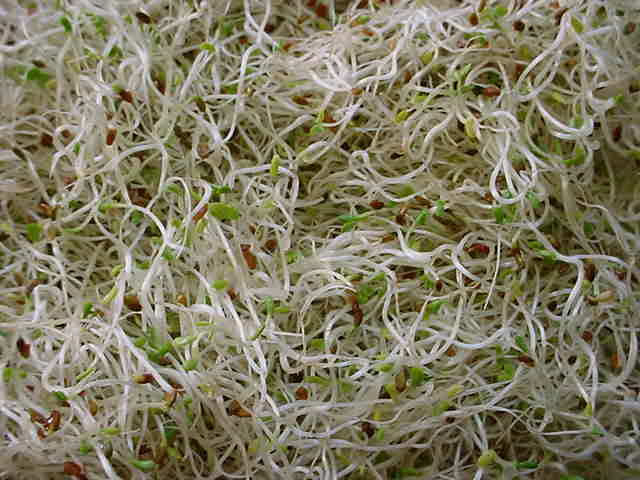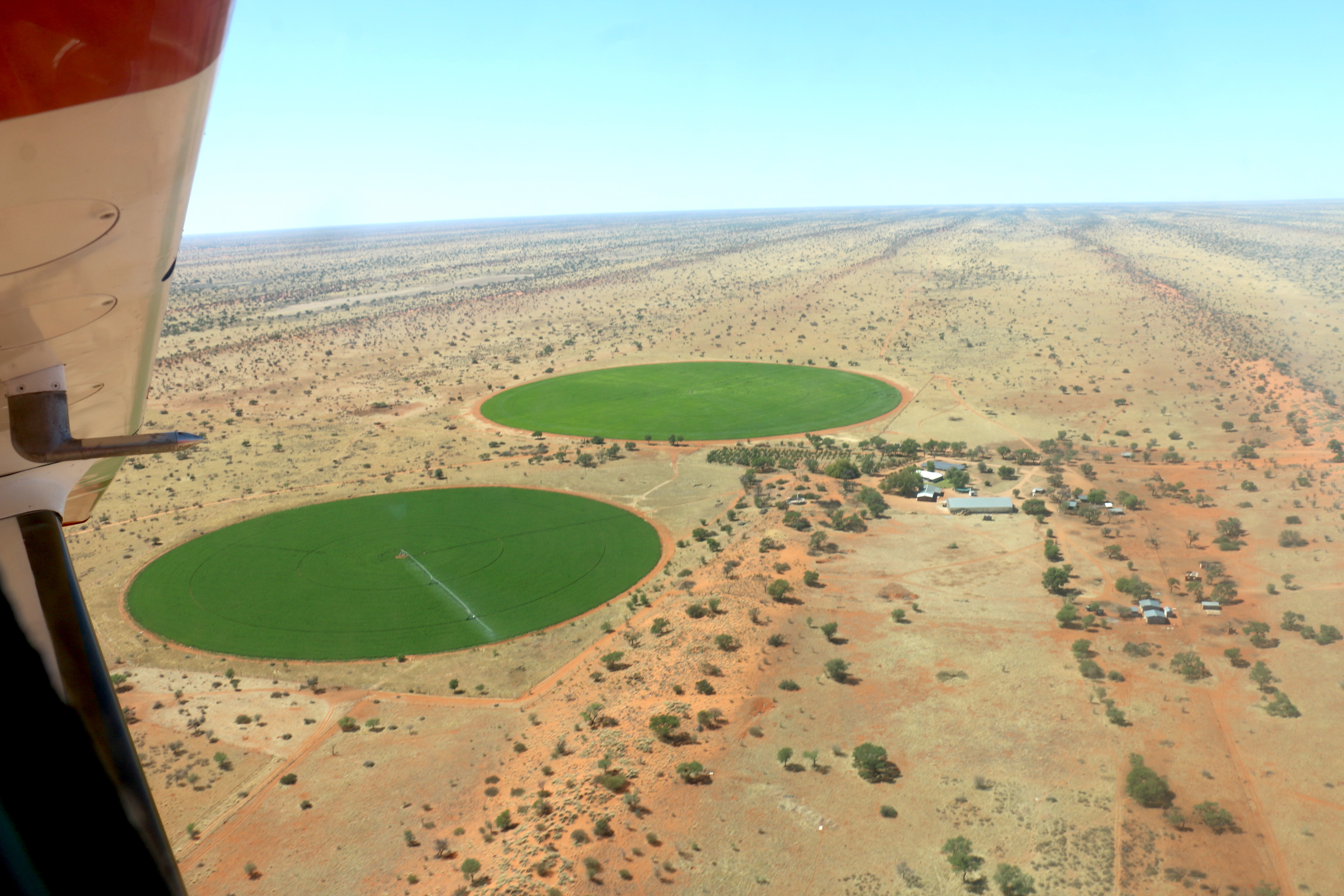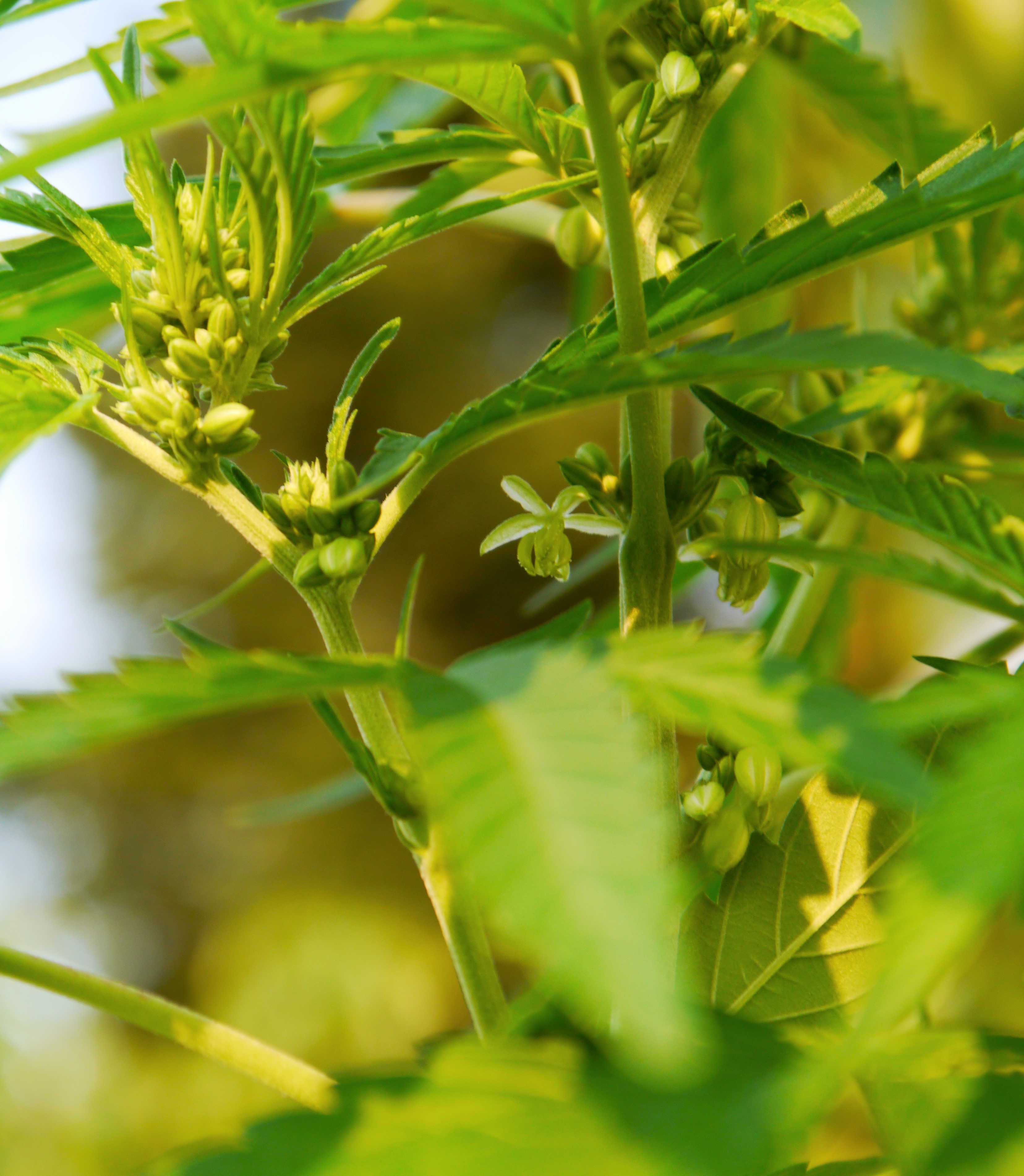|
Sativa
Sativa, sativus, and sativum are Latin botanical adjectives meaning '' cultivated''. It is often associated botanically with plants that promote good health and used to designate certain seed-grown domestic crops. Usage ''Sativa'' (ending in -a) is the feminine form of the adjective, but masculine (-us) and neuter (-um) endings are also used to agree with the gender of the nouns they modify. For example, the masculine '' Crocus sativus'' and neuter '' Pisum sativum''. ;Examples Examples of crops incorporating this word and its variations into their Latin name include: * ''Allium sativum'', garlic. * '' Avena sativa'', the common oat. * '' Cannabis sativa'', one of three forms of cannabis.The major species of ''Cannabis'' are ''sativa'', ''indica'', and ''ruderalis''. {{Cite magazine , last=Resin , first=Harry , date=9 May 2014 , title=5 Differences Between Sativa and Indica , url=http://www.hightimes.com/read/5-differences-between-sativa-and-indica , magazine= High Times , acce ... [...More Info...] [...Related Items...] OR: [Wikipedia] [Google] [Baidu] |
Cannabis
''Cannabis'' () is a genus of flowering plants in the family Cannabaceae. The number of species within the genus is disputed. Three species may be recognized: '' Cannabis sativa'', '' C. indica'', and '' C. ruderalis''. Alternatively, ''C. ruderalis'' may be included within ''C. sativa'', all three may be treated as subspecies of ''C. sativa'', or ''C. sativa'' may be accepted as a single undivided species. The genus is widely accepted as being indigenous to and originating from Asia. The plant is also known as hemp, although this term is often used to refer only to varieties of ''Cannabis'' cultivated for non-drug use. Cannabis has long been used for hemp fibre, hemp seeds and their oils, hemp leaves for use as vegetables and as juice, medicinal purposes, and as a recreational drug. Industrial hemp products are made from cannabis plants selected to produce an abundance of fibre. Various cannabis strains have been bred, often selectivel ... [...More Info...] [...Related Items...] OR: [Wikipedia] [Google] [Baidu] |
Castanea Sativa
''Castanea sativa'', the sweet chestnut, Spanish chestnut or just chestnut, is a species of tree in the family Fagaceae, native to Southern Europe and Asia Minor, and widely cultivated throughout the temperate world. A substantial, long-lived deciduous tree, it produces an edible seed, the chestnut, which has been used in cooking since ancient times. Description ''C. sativa'' attains a height of with a trunk often in diameter. Around 20 trees are recorded with diameters over including one in diameter at breast height. A famous ancient tree known as the Hundred Horse Chestnut in Sicily was historically recorded at in diameter (although it has split into multiple trunks above ground). The bark often has a net-shaped (retiform) pattern with deep furrows or fissures running spirally in both directions up the trunk. The trunk is mostly straight with branching starting at low heights. The oblong-lanceolate, boldly toothed leaves are long and broad. The flowers of both s ... [...More Info...] [...Related Items...] OR: [Wikipedia] [Google] [Baidu] |
Sweet Chestnut
''Castanea sativa'', the sweet chestnut, Spanish chestnut or just chestnut, is a species of tree in the family Fagaceae, native to Southern Europe and Asia Minor, and widely cultivated throughout the temperate world. A substantial, long-lived deciduous tree, it produces an edible seed, the chestnut, which has been used in cooking since ancient times. Description ''C. sativa'' attains a height of with a trunk often in diameter. Around 20 trees are recorded with diameters over including one in diameter at breast height. A famous ancient tree known as the Hundred Horse Chestnut in Sicily was historically recorded at in diameter (although it has split into multiple trunks above ground). The bark often has a net-shaped (retiform) pattern with deep furrows or fissures running spirally in both directions up the trunk. The trunk is mostly straight with branching starting at low heights. The oblong-lanceolate, boldly toothed leaves are long and broad. The flowers of both s ... [...More Info...] [...Related Items...] OR: [Wikipedia] [Google] [Baidu] |
Parsnip
The parsnip (''Pastinaca sativa'') is a root vegetable closely related to carrot and parsley, all belonging to the flowering plant family Apiaceae. It is a biennial plant usually grown as an annual. Its long taproot has cream-colored skin and flesh, and, left in the ground to mature, it becomes sweeter in flavor after winter frosts. In its first growing season, the plant has a rosette of pinnate, mid-green leaves. If unharvested, in its second growing season it produces a flowering stem topped by an umbel of small yellow flowers, later producing pale brown, flat, winged seeds. By this time, the stem has become woody and the tap root inedible. The parsnip is native to Eurasia; it has been used as a vegetable since antiquity and was cultivated by the Romans, although some confusion exists between parsnips and carrots in the literature of the time. It was used as a sweetener before the arrival of cane sugar in Europe. Parsnips are usually cooked, but can also be eaten ra ... [...More Info...] [...Related Items...] OR: [Wikipedia] [Google] [Baidu] |
Lactuca Sativa
Lettuce (''Lactuca sativa'') is an annual plant of the family Asteraceae. It is most often grown as a leaf vegetable, but sometimes for its stem and seeds. Lettuce is most often used for salads, although it is also seen in other kinds of food, such as soups, sandwiches and wraps; it can also be grilled. One variety, celtuce (asparagus lettuce), is grown for its stems, which are eaten either raw or cooked. In addition to its main use as a leafy green, it has also gathered religious and medicinal significance over centuries of human consumption. Europe and North America originally dominated the market for lettuce, but by the late 20th century the consumption of lettuce had spread throughout the world. , world production of lettuce and chicory was 27 million tonnes, 56percent of which came from China. Lettuce was originally farmed by the ancient Egyptians, who transformed it from a plant whose seeds were used to obtain oil into an important food crop raised for its succulent ... [...More Info...] [...Related Items...] OR: [Wikipedia] [Google] [Baidu] |
Alfalfa
Alfalfa () (''Medicago sativa''), also called lucerne, is a perennial flowering plant in the legume family Fabaceae. It is cultivated as an important forage crop in many countries around the world. It is used for grazing, hay, and silage, as well as a green manure and cover crop. The name alfalfa is used in North America. The name lucerne is the more commonly used name in the United Kingdom, South Africa, Australia, and New Zealand. The plant superficially resembles clover (a cousin in the same family), especially while young, when trifoliate leaves comprising round leaflets predominate. Later in maturity, leaflets are elongated. It has clusters of small purple flowers followed by fruits spiralled in 2 to 3 turns containing 10–20 seeds. Alfalfa is native to warmer temperate climates. It has been cultivated as livestock fodder since at least the era of the ancient Greeks and Romans. Etymology The word ''alfalfa'' is a Spanish modification of the Arabic word ''a ... [...More Info...] [...Related Items...] OR: [Wikipedia] [Google] [Baidu] |
Medicago Sativa
Alfalfa () (''Medicago sativa''), also called lucerne, is a perennial flowering plant in the legume family Fabaceae. It is cultivated as an important forage crop in many countries around the world. It is used for grazing, hay, and silage, as well as a green manure and cover crop. The name alfalfa is used in North America. The name lucerne is the more commonly used name in the United Kingdom, South Africa, Australia, and New Zealand. The plant superficially resembles clover (a cousin in the same family), especially while young, when trifoliate leaves comprising round leaflets predominate. Later in maturity, leaflets are elongated. It has clusters of small purple flowers followed by fruits spiralled in 2 to 3 turns containing 10–20 seeds. Alfalfa is native to warmer temperate climates. It has been cultivated as livestock fodder since at least the era of the ancient Greeks and Romans. Etymology The word ''alfalfa'' is a Spanish modification of the Arabic word ''al-faṣfa� ... [...More Info...] [...Related Items...] OR: [Wikipedia] [Google] [Baidu] |
Lettuce
Lettuce (''Lactuca sativa'') is an annual plant of the family Asteraceae. It is most often grown as a leaf vegetable, but sometimes for its stem and seeds. Lettuce is most often used for salads, although it is also seen in other kinds of food, such as soups, sandwiches and wraps; it can also be grilled. One variety, celtuce (asparagus lettuce), is grown for its stems, which are eaten either raw or cooked. In addition to its main use as a leafy green, it has also gathered religious and medicinal significance over centuries of human consumption. Europe and North America originally dominated the market for lettuce, but by the late 20th century the consumption of lettuce had spread throughout the world. , world production of lettuce and chicory was 27 million tonnes, 56percent of which came from China. Lettuce was originally farmed by the ancient Egyptians, who transformed it from a plant whose seeds were used to obtain oil into an important food crop raised for its succulent ... [...More Info...] [...Related Items...] OR: [Wikipedia] [Google] [Baidu] |
Cannabis Sativa
''Cannabis sativa'' is an annual herbaceous flowering plant indigenous to Eastern Asia, but now of cosmopolitan distribution due to widespread cultivation. It has been cultivated throughout recorded history, used as a source of industrial fiber, seed oil, food, recreation, religious and spiritual moods and medicine. Each part of the plant is harvested differently, depending on the purpose of its use. The species was first classified by Carl Linnaeus in 1753. The word ''sativa'' means "things that are cultivated." Plant physiology The flowers of ''Cannabis sativa'' are unisexual and plants are most often either male or female. It is a short-day flowering plant, with staminate (male) plants usually taller and less robust than pistillate (female or male) plants. The flowers of the female plant are arranged in racemes and can produce hundreds of seeds. Male plants shed their pollen and die several weeks prior to seed ripening on the female plants. Under typical conditions with a ... [...More Info...] [...Related Items...] OR: [Wikipedia] [Google] [Baidu] |
Nigella Sativa
''Nigella sativa'' (black caraway, also known as black cumin, nigella, kalonji or siyahdaneh) is an annual flowering plant in the family Ranunculaceae, native to eastern Europe (Bulgaria and Romania) and Western Asia (Cyprus, Turkey, Iran and Iraq), but naturalized over a much wider area, including parts of Europe, northern Africa and east to Myanmar. Etymology The genus name ''Nigella'' is a diminutive of the Latin 'black', referring to the seed color. p. 341. The specific epithet ''sativa'' means 'cultivated'. In English, ''N. sativa'' and its seed are variously called black caraway, black seed, black cumin, fennel flower, nigella, nutmeg flower, Roman coriander, and ''kalonji''. Blackseed and black caraway may also refer to ''Bunium persicum''. Description ''N. sativa'' grows to tall, with finely divided, linear (but not thread-like) leaves. The flowers are delicate, and usually coloured pale blue and white, with five to ten petals. The fruit is a large and inflated ... [...More Info...] [...Related Items...] OR: [Wikipedia] [Google] [Baidu] |
Oryza Sativa
''Oryza sativa'', commonly known as Asian rice or indica rice, is the plant species most commonly referred to in English as ''rice''. It is the type of farmed rice whose cultivars are most common globally, and was first domesticated in the Yangtze River basin in China 13,500 to 8,200 years ago. ''Oryza sativa'' belongs to the genus '' Oryza'' of the grass family Poaceae. With a genome consisting of 430 Mbp across 12 chromosomes, it is renowned for being easy to genetically modify and is a model organism for the botany of cereals. Classification ''Oryza sativa'' contains two major subspecies: the sticky, short-grained ''japonica'' or ''sinica'' variety, and the nonsticky, long-grained ' rice variety. ''Japonica'' was domesticated in the Yangtze Valley 9–6,000 years ago, and its varieties can be cultivated in dry fields (it is cultivated mainly submerged in Japan), in temperate East Asia, upland areas of Southeast Asia, and high elevations in South Asia, while ''indica'' ... [...More Info...] [...Related Items...] OR: [Wikipedia] [Google] [Baidu] |
Eruca Sativa
Arugula (American English) or rocket (Commonwealth English) (''Eruca vesicaria''; syns. ''Eruca sativa'' Mill., ''E. vesicaria'' subsp. ''sativa'' (Miller) Thell., ''Brassica eruca'' L.) is an edible annual plant in the family Brassicaceae used as a leaf vegetable for its fresh, tart, bitter, and peppery flavor. Other common names include garden rocket (in Britain, Australia, South Africa, Ireland, and New Zealand), and eruca. It is also called "ruchetta," "rucola," "rucoli," "rugula," " colewort," and "roquette." ''Eruca sativa'', which is widely popular as a salad vegetable, is a species of '' Eruca'' native to the Mediterranean region, from Morocco and Portugal in the west to Syria, Lebanon, Palestine, Egypt and Turkey in the east.Med-Checklist''Eruca sativa''./ref>Blamey, M. & Grey-Wilson, C. (1989). ''Flora of Britain and Northern Europe''. . It is sometimes conflated with '' Diplotaxis tenuifolia'', known as "perennial wall rocket," another plant of the family Brassicac ... [...More Info...] [...Related Items...] OR: [Wikipedia] [Google] [Baidu] |

.jpg)





